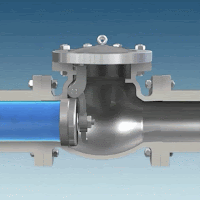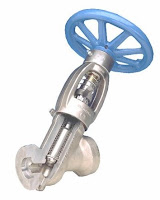Pressure drop significantly affects the design and operation of industrial valve systems. It refers to the reduction in pressure as fluid flows through a valve. Several factors influence this phenomenon, including valve type, flow rate, fluid properties, and valve geometry. Understanding pressure drop ensures efficient and safe operation of fluid systems. Here’s a detailed description of the pressure drop as it applies to various types of industrial valves:
Ball Valves
Ball valves offer simplicity, durability, and tight seals in industrial applications. The valve uses a spherical ball with a hole through the middle, aligning with the pipeline to allow or block flow.
Pressure Drop Characteristics:
- Low Pressure Drop: Fully open ball valves exhibit a low pressure drop due to their straight and unobstructed flow path. The smooth, rounded interior of the ball minimizes turbulence and resistance.
- Impact of Partial Opening: Partially open ball valves significantly increase pressure drop. The fluid navigates around the partially obstructed path, creating turbulence and resistance.
- Valve Size and Flow Rate: Larger ball valves and higher flow rates reduce the relative pressure drop, but designers must consider potential cavitation and erosion.
Gate Valves
Gate valves primarily control on/off flow in a pipeline. They consist of a gate (or wedge) that moves up and down to start or stop the flow.Pressure Drop Characteristics:
- Minimal Pressure Drop when Fully Open: Fully open gate valves exhibit very low pressure drops because the gate remains entirely out of the flow path, allowing fluid to pass with minimal resistance.
- High Pressure Drop during Partial Operation: Partially open gate valves significantly increase turbulence and pressure drop, making them unsuitable for throttling applications.
- Design and Maintenance: When open, a straight-through flow path minimizes pressure drop, but over time, wear and tear on the gate and seat can impact performance and increase pressure drop.
Globe Valves
Globe valves excel at regulating flow and are used in applications requiring precise flow control. They consist of a movable disk-type element and a stationary ring seat in a spherical body.Pressure Drop Characteristics:
- Higher Pressure Drop: Globe valves inherently exhibit higher pressure drops than ball and gate valves due to the fluid changing direction as it passes through the valve. The tortuous path creates more resistance.
- Flow Control: Globe valve design makes them ideal for throttling and precise flow control, but this advantage comes with higher pressure drops.
- Valve Position: The valve opening degree significantly affects the pressure drop. Partial opening creates more resistance and higher pressure drops due to increased turbulence.
Butterfly Valves
Butterfly valves control flow using a rotating disc. They are commonly used in applications requiring quick shut-off and suit large-diameter pipes.Pressure Drop Characteristics:
- Moderate Pressure Drop: Fully open butterfly valves exhibit moderate pressure drops because the disc remains in the flow path even when rotated to the open position, creating some obstruction and turbulence.
- Variable Pressure Drop: The pressure drop increases as the valve moves towards the closed position. The partially obstructed disc increases flow resistance and turbulence.
- Efficiency and Application: Butterfly valves efficiently handle large volumes of flow with moderate pressure drops. They are often used in water distribution, HVAC systems, and various industrial applications where space and weight considerations matter.
Factors Influencing Pressure Drop Across Valves
Several factors influence pressure drop across industrial valves:
- Valve Design: Internal valve geometry, including the flow path and obstructions, plays a significant role.
- Flow Rate: Higher flow rates generally increase pressure drop due to greater frictional forces.
- Fluid Properties: Fluid viscosity and density affect how they interact with valve surfaces.
- Valve Size: Larger valves typically exhibit lower pressure drops for a given flow rate than smaller valves.
- Operational Conditions: Valve position (fully open, partially open, or closed) significantly affects pressure drop.
Understanding these characteristics helps select the appropriate valve for specific applications, ensuring efficient and safe operation while maintaining desired flow control and minimizing energy losses.
https://psi-team.com
800-223-1468
.png)







